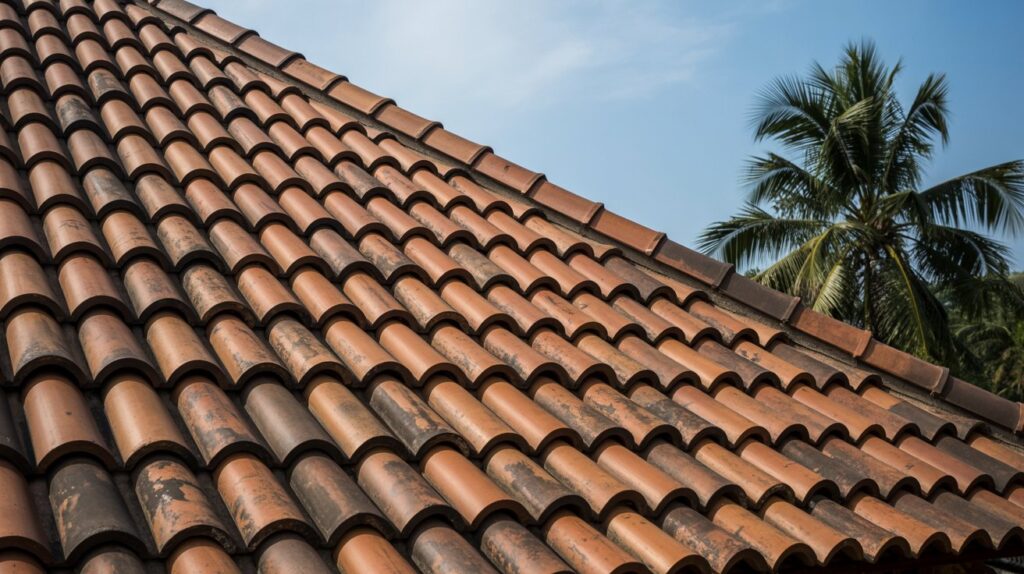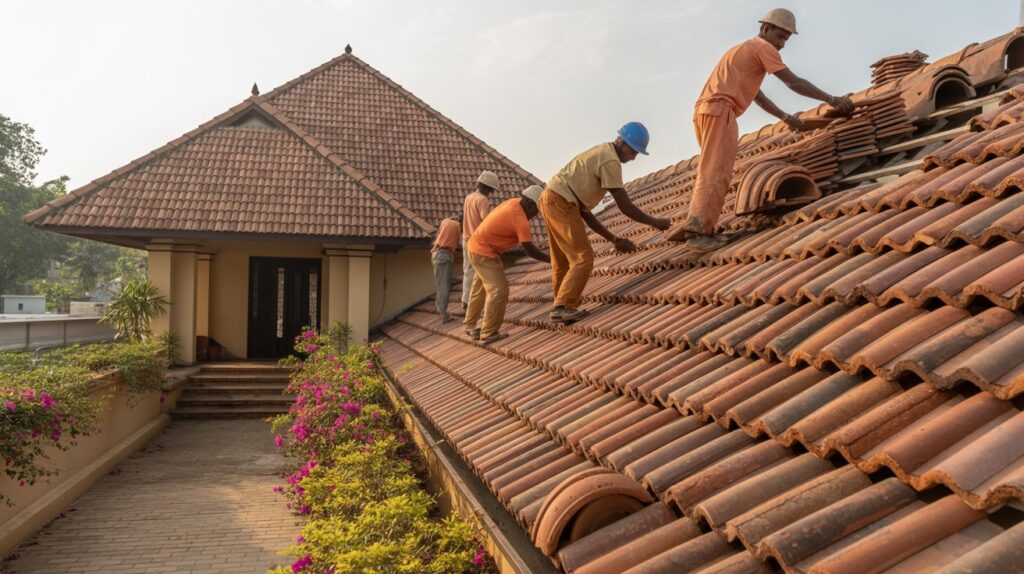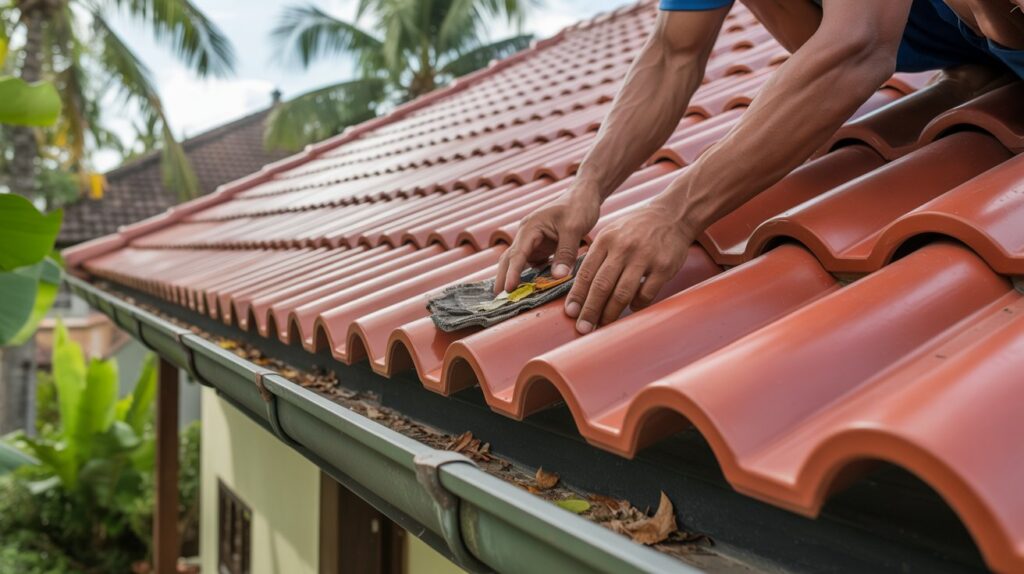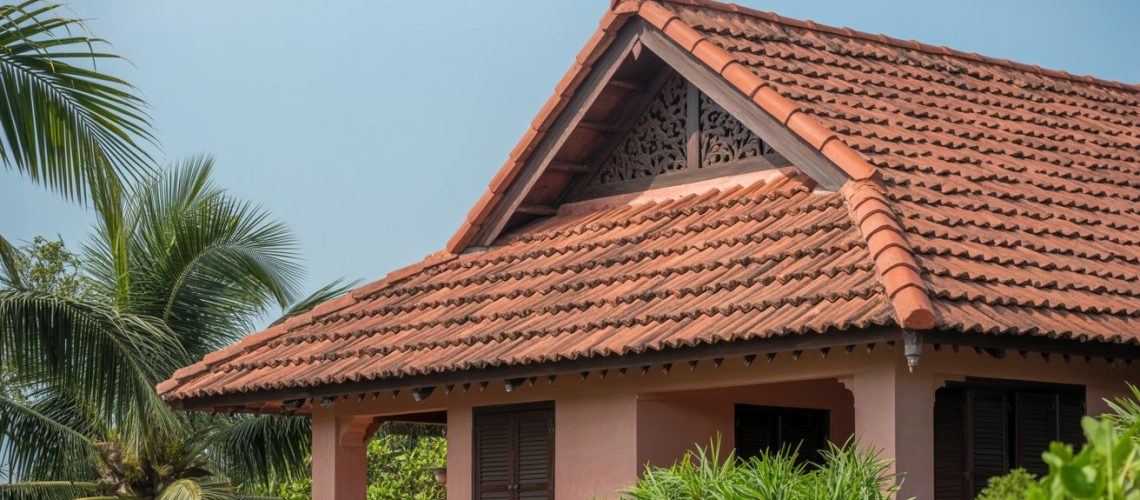When it comes to roofing solutions in tropical regions of India, Mangalore tile roofing stands out as a timeless choice that perfectly blends durability, sustainability, and aesthetics. These clay tiles, originally crafted in the coastal city of Mangalore, Karnataka, have adorned homes, temples, and public buildings for more than a century. In this comprehensive guide, we will dive deep into the history, manufacturing process, advantages, installation, maintenance, and even debunk some common myths surrounding Mangalore tile roofing. By the end of this article, you will fully understand why these red clay tiles continue to be a top roofing material choice for many homeowners.
If you are exploring various roofing options or considering combining traditional tiles with modern solutions, companies like Tesco Structures offer a variety of roofing systems, including tile, shingles, and tensile roofing solutions, providing flexible and durable designs for every architectural style.
What Are Mangalore Tiles?
Origin and History
Mangalore tiles originated in the 19th century during British colonial rule when the first tile factories were established in Mangalore, Karnataka. They were designed to withstand the heavy monsoon rains and salty coastal winds prevalent in the region. Since then, the production of these tiles has expanded, but their traditional shape, color, and strength have remained consistent.
Manufacturing Process
The making of Mangalore tiles involves several precise steps:
- Clay Selection: High-quality clay is sourced from nearby riverbanks and mixed with water to achieve the right consistency.
- Molding: The clay is then shaped into the characteristic curved tiles using wooden molds.
- Drying: These molded tiles are air-dried under shade to reduce moisture.
- Kiln Firing: Finally, the tiles are fired in kilns at high temperatures (around 1000°C), which gives them their characteristic strength and reddish color.
The firing process is crucial, as it hardens the tiles and makes them weather-resistant.
Key Features of Mangalore Tile Roofing

Durability and Weather Resistance
One of the primary reasons for the enduring popularity of Mangalore tile roofing is its incredible durability. The high-temperature firing process ensures that the tiles can withstand the most extreme weather conditions—be it the relentless summer heat, monsoon rains, or salty coastal breezes. These tiles are also fire-resistant, adding an extra layer of safety to homes.
If you are interested in exploring other durable roofing options, Tesco Structures’ shingles roofing provide excellent alternatives combining aesthetics with weather resistance, perfect for modern architectural needs.
Aesthetic Appeal
Mangalore tiles offer a visually pleasing roof with their unique curved shape and vibrant red-orange hue. Their classic look complements both traditional and modern architecture. Whether you have a colonial-style bungalow or a contemporary villa, these tiles add a rustic charm that is hard to replicate with other roofing materials.
Thermal Insulation
The thick clay tiles naturally provide excellent thermal insulation. This means your home stays cooler during scorching summers and warmer in cooler months. This characteristic can significantly reduce your reliance on artificial cooling and heating, leading to energy savings.
Eco-Friendly Roofing Solution
Sustainability is a key concern today, and Mangalore tile roofing fits perfectly into an eco-conscious lifestyle. Made entirely from natural clay, these tiles are biodegradable and can be recycled or reused at the end of their lifespan. Additionally, the manufacturing process has a relatively low carbon footprint compared to concrete or metal roofing materials.
For large commercial or open-air structures, companies like Tesco also offer tensile roofing solutions that focus on flexibility and environmental considerations.
Advantages of Mangalore Tile Roofing
Longevity and Low Maintenance
With proper installation and maintenance, Mangalore tile roofs can last over 50 years, sometimes even up to 100 years. Unlike cheaper alternatives that require frequent replacements or repairs, these tiles offer long-term cost efficiency.
Resistance to Algae and Moss
Due to their natural composition and fired surface, these tiles resist moss and algae growth better than many other roofing materials. This characteristic is especially beneficial in humid or rainy climates, where moss growth can be a common problem.
Ease of Repair
In case of any damage, Mangalore tiles are relatively easy to replace individually without dismantling the entire roof. This is an economical advantage as you can repair minor damages quickly and cost-effectively.
Installation Process Explained

Although Mangalore tile roofing is widely used, installing it requires skilled workmanship to ensure durability and prevent issues such as water leakage or tile breakage.
Step 1: Roof Preparation
The roof structure must be strong enough to bear the weight of clay tiles, which is heavier than materials like metal sheets or asphalt shingles. Typically, wooden or metal battens are fixed over rafters to provide a solid base.
Step 2: Laying Battens
Wooden battens, spaced evenly across the roof, provide anchorage points for the tiles. The spacing depends on the size of the tiles to ensure they interlock perfectly.
Step 3: Tile Placement
Tiles are laid starting from the eaves (lowest edge) moving upward towards the ridge. They are overlapped carefully to avoid water seepage. The curved shape helps channel water away, preventing pooling.
Step 4: Fixing Ridge and Hip Tiles
Special ridge caps and hip tiles are used to cover the roof’s edges and peak, sealing it from rain and wind.
Professional Installation
Because precise alignment and spacing are essential, it is highly recommended to hire experienced roofing contractors who understand the specific requirements of Mangalore tile roofing. Companies like Tesco Structures offer expert installation services along with a wide range of roofing materials to suit your project.
Maintenance Tips for Long-Lasting Mangalore Tile Roofs

Although Mangalore tiles are durable, regular maintenance will prolong their life and appearance.
1. Clean the Roof Regularly
Remove leaves, twigs, and other debris to prevent water stagnation, which can cause moss growth or tile damage.
2. Inspect for Cracks or Breakage
Tiles can crack due to physical impact or aging. Check every six months and replace any damaged tiles immediately.
3. Check Gutters and Drainage
Ensure gutters are clear so rainwater flows freely, preventing water accumulation that might seep under tiles.
4. Avoid Walking on Tiles
Clay tiles can be brittle under pressure, so avoid unnecessary walking on the roof to prevent breakage.
Common Myths Debunked
Myth 1: Mangalore Tiles Are Too Heavy
While these tiles are heavier than some modern materials, modern roofing structures can be engineered to support their weight easily. The benefits far outweigh the weight concern.
Myth 2: They Are Expensive
Although the upfront cost might be slightly higher, the longevity and low maintenance of Mangalore tiles make them economical over time.
Myth 3: They Are Not Suitable for Modern Homes
On the contrary, many architects are incorporating Mangalore tiles in contemporary designs for a unique, eco-friendly aesthetic.
Conclusion
Choosing Mangalore tile roofing is not just about protecting your home; it is about embracing a heritage of quality, sustainability, and timeless beauty. These tiles provide robust protection against harsh weather while keeping your home cool and stylish. Whether you’re building a new house or renovating an old one, Mangalore tiles offer a roofing solution that’s both practical and elegant.
For those considering alternative or complementary roofing options, Tesco Structures offers a comprehensive range of roofing materials and solutions, including shingles roofing and tensile roofing solutions, catering to diverse architectural needs and styles.

